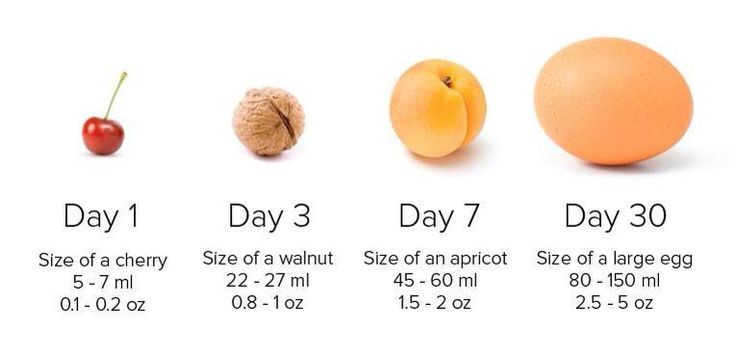
Vitamin K Shot: Consent or Deny?
04/18/2016
To Cut or Not To Cut
05/02/2016Over the years we have supported hundreds and hundreds of mommies with breastfeeding. Collectively the Origins Midwives have nursed their own children for a total of 16 years. Crazy, right!? I guess you could say, we know a thing or two about breastfeeding.
Sometimes breastfeeding is the most natural thing you have ever done. The baby does the breast crawl up to the mother’s breast, finds the nipples as they bobble their head around, and latches right on. OR it’s the most un-natural thing you have ever done! This tiny little baby has no idea what to do with this massive boob that is being shoved in its face. Tired mommy feels awkward and little baby is frustrated. In these times it’s important to remember that there will always be a learning curve for your new baby. (S)he has never nursed before, so they just need a little time and some patience in the early days. Certainly if you have never nursed a baby before you will have a learning curve as well. The best thing you can do is go to a Good Breastfeeding class and buy The Womanly Art of Breastfeeding book!
Here are some helpful things to remember:
1.) Input = Output
We always have mom’s asking, “How do I know my baby is getting anything? I don’t see any milk coming out and when I pump I am only getting a few drops.” The answer is simple, if your baby is pooping and peeing, they are getting milk! Most first time moms will never see the colostrum they produce, and aren’t able to pump it out, but that doesn’t mean it isn’t in there!
2.) What the heck is “Colostrum”?
Colostrum is the milk you produce starting in the third trimester to feed a brand new baby. When your baby is born their stomach is only about the size of a cherry. Because their tummies are so tiny they only need a low volume of milk, but what they do get needs to be high in content, and they need it often! That leads us into our next tip….

3.) Supply and Demand
Breastfeeding is simple, the more you nurse, the more you will produce. In the early days because the baby doesn’t get a lot at each feeding they must nurse often. Every 2-3 hours on average…. around the clock! The more you nurse in the early days the better milk supply you will have and the faster your mature milk will come in! Once your mature milk comes in, usually around Day 3 postpartum, you can move to more of a demand feeding schedule.
4.) LATCH, LATCH, LATCH!
Your little one MUST obtain a good latch for every nursing session. One bad latch can cause soreness on your nipples. This is why going to an informative breast-feeding class is so very important. It will teach you how to latch your newborn well. The 3 best tips for achieving a proper latch are:
 A) Mommy get comfortable. Go to the restroom and grab a glass of water BEFORE you begin. Recline back in your chair and have support pillows all around you.
A) Mommy get comfortable. Go to the restroom and grab a glass of water BEFORE you begin. Recline back in your chair and have support pillows all around you.
B) Vigorously massage your breast to help soften the tissue and to help stimulate the initial “letdown.”
C) Make sure your baby opens their mouth nice and wide so they get a deep latch with lips flanged out on top AND bottom, and have as much of your areola in their mouth as possible.
5.) Ask a knowledgeable care provider who has been specifically trained to identify lip and/or tongue restrictions in newborns.
Sometimes breastfeeding is the most natural thing you have ever done. The baby does the breast crawl up to the mother’s breast, finds the nipples as they bobble their head around, and latches right on. OR it’s the most un-natural thing you have ever done! This tiny little baby has no idea what to do with this massive boob that is being shoved in its face. Tired mommy feels awkward and little baby is frustrated. In these times it’s important to remember that there will always be a learning curve for your new baby. (S)he has never nursed before, so they just need a little time and some patience in the early days. Certainly if you have never nursed a baby before you will have a learning curve as well. The best thing you can do is go to a Good Breastfeeding class and buy The Womanly Art of Breastfeeding book!
Here are some helpful things to remember:
1.) Input = Output
We always have mom’s asking, “How do I know my baby is getting anything? I don’t see any milk coming out and when I pump I am only getting a few drops.” The answer is simple, if your baby is pooping and peeing, they are getting milk! Most first time moms will never see the colostrum they produce, and aren’t able to pump it out, but that doesn’t mean it isn’t in there!
2.) What the heck is “Colostrum”?
Colostrum is the milk you produce starting in the third trimester to feed a brand new baby. When your baby is born their stomach is only about the size of a cherry. Because their tummies are so tiny they only need a low volume of milk, but what they do get needs to be high in content, and they need it often! That leads us into our next tip….

3.) Supply and Demand
Breastfeeding is simple, the more you nurse, the more you will produce. In the early days because the baby doesn’t get a lot at each feeding they must nurse often. Every 2-3 hours on average…. around the clock! The more you nurse in the early days the better milk supply you will have and the faster your mature milk will come in! Once your mature milk comes in, usually around Day 3 postpartum, you can move to more of a demand feeding schedule.
4.) LATCH, LATCH, LATCH!
Your little one MUST obtain a good latch for every nursing session. One bad latch can cause soreness on your nipples. This is why going to an informative breast-feeding class is so very important. It will teach you how to latch your newborn well. The 3 best tips for achieving a proper latch are:
 A) Mommy get comfortable. Go to the restroom and grab a glass of water BEFORE you begin. Recline back in your chair and have support pillows all around you.
A) Mommy get comfortable. Go to the restroom and grab a glass of water BEFORE you begin. Recline back in your chair and have support pillows all around you.B) Vigorously massage your breast to help soften the tissue and to help stimulate the initial “letdown.”
C) Make sure your baby opens their mouth nice and wide so they get a deep latch with lips flanged out on top AND bottom, and have as much of your areola in their mouth as possible.
5.) Ask a knowledgeable care provider who has been specifically trained to identify lip and/or tongue restrictions in newborns.
CLICK HERE FOR MORE INFORMATION
Most importantly make a goal. Hang in there for the first month no matter how hard it is, seek help, and surround yourself with a good support system. If you do these things then you will find at the end of that first month you aren't even thinking about latch and supply because nursing will be second nature by then. And if it's not, you have people around you that know how to help! Here at Origins we are a family. It is so neat to watch all our mommies loving and supporting each other through their breastfeeding challenges. Remember in the end this will be worth all your hard work, we promise!Don't forget to follow us on Social Media:
FACEBOOK, INSTAGRAM, and TWITTER


